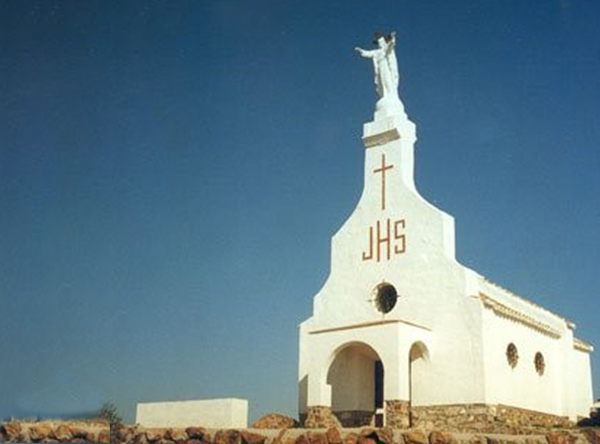Los Navalmorales

Hermitage of San Sebastián

Church of Nuestra Señora de la Antigua
Information from Los Navalmorales:
 Telephone: 925 404 181
Telephone: 925 404 181
 Web: http://www.losnavalmorales.es/
Web: http://www.losnavalmorales.es/
 Info:
Info:
 Email: ayuntamiento@losnavalmorales.es
Email: ayuntamiento@losnavalmorales.es
This municipality is located on the border between La Jara and the Toledo mountains and the first written records of Los Navalmorales date back to the 15th century . Examination of the archaeological remains found leads us to conclude that there have been pre-Roman, Hispano-Roman, Visigoth and Mozarabic settlements in these lands. It would be in the 17th century when this locality became independent and became a town, where the jurisdictional roll was erected.
This is a territory with valleys that become wider and wider with some ploughed and fallow land, streams that are home to some irrigated areas and pastures that were sometimes irrigated with the canals of the water mills that are preserved in large numbers in this area. Ash groves and some poplar groves dot the riverbeds and on the less steep slopes there are patches of Mediterranean woodland and olive groves. Above it stretches the great plains of the Jareña mountains. The beautiful landscapes surrounding Los Navalmorales are ideal for hiking and pleasant bike rides.
A municipality that stands out for its olive oil with D.O. Montes de Toledo, which has its greatest expression in this town, hence the recent creation of an Olive Grove Interpretation Centre, diversifying tourism towards Oleotourism.
Tourist Information
Find out more
What to see?
The parish church of Los Navalmorales, built in stone and brick, has a three-nave ground plan, with the construction of the main chapel and the side chapels beginning in the 16th century. It has a magnificent octagonal baptistery and an upper dome that enhances the main altar itself, where an exquisite gilded altarpiece stands out, all dating from the 17th century, in the Baroque style from the convent of the Comendadoras de Santiago de Toledo. Attached to the temple is the tower, from the 17th century in the Herrerian style at its base, with an attractive square floor plan of 8 metres on each side, which rises on a solid ashlar pedestal, in five bodies carved in stone and brick and with cushioned corners in carved stone, which have a beautiful view. Because of its slenderness, height, distinction and good workmanship, it is considered one of the best in the province of Toledo and is known, with good reason, as the "good girl".
It is the oldest religious building in the town, inaugurated in the 16th century. The hermitage is located next to the municipal cemetery and opposite the "Cruz de los Remedios", a cross of carved granite. It is accessed via a granite staircase, and at the entrance door there is a niche with the image of the Virgin of Los Remedios, in the Romanesque style. It is a temple with a single rectangular nave, of solid stone and brick construction, excellent wooden coffered ceiling, and at the back there is a small altar with the image of the Virgen de los Remedios.
A simple church with a main doorway under a semicircular arch in brick, with a rectangular floor plan between party walls. On the side façade there is a belfry with a single eye that houses the bell.
A popular building dating from the 18th century.
Located at the top of the hill known as "Sierra del Santo", it is a simple temple with a single nave, popular architecture that stands out for its belfry without bells topped with a Christ that gives his blessing to the people.
It is a fountain built in the 17th century. As its name indicates, this fountain has six spouts through which it spouts water directly from an underground aquifer, which occupies most of the locality.
It used to stand in the centre of the square that bore its name, now the Plaza de la Constitución, on a five-step grandstand. Made of well-crafted stone, its capital has a curvilinear, fluted body and a carved appendix, the whole culminating in an iron cross. The column reads: "EN DOS DE JVLIO DE 1665 AÑOS" which was the date it was erected.
Olive Grove Interpretation Centre where visitors will find the most advanced technology to make their visit an unforgettable experience (video mapping, touch walls, magic books, etc.) A fully interactive tour designed for your learning enjoyment. An exclusive visit full of sensations around the magical world of EVOO, the visitor will be able to see first hand the olive grove and the modern oil mill. (https://lapontezuela.com/)
